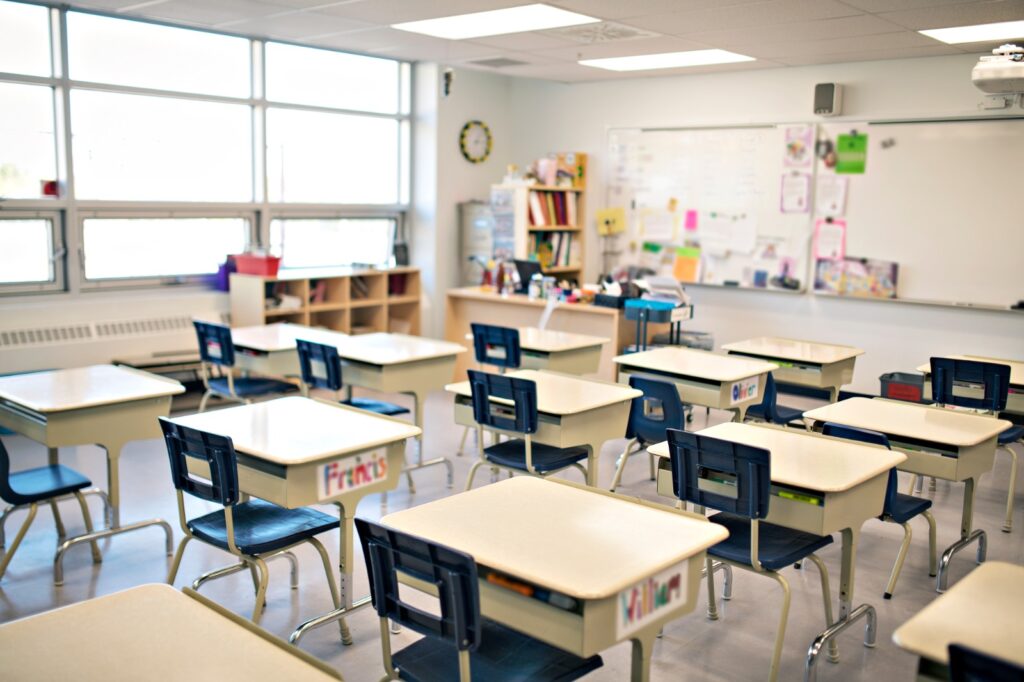Education plays a pivotal role in shaping the future of society. Society changes at breakneck speeds, but school systems and models remain relatively stagnant. The similarities between the pictures of an old one-room school and that of a modern public school classroom my children went through 100 years later are mind-blowing. Students are still passive learners in groups of 20-25 in rows led by a teacher in front of the classroom.


We aim to equip the younger generation through schools with the knowledge and skills necessary to thrive in an ever-evolving world. However, the traditional school system, the cornerstone of education for decades, is increasingly failing students due to its unwillingness and inability to institute systemic change quickly. Five main reasons contribute to traditional education’s current limitations, but luckily many alternative approaches could help address those shortcomings.
Reason 1: Current School System is Designed to Education the Masses, Not Individuals
One of the primary reasons why traditional schools are failing students is their inability to cater to individual learning needs. Additionally, with the national teaching shortage and decreased educational funding, teacher-to-student ratios are higher than ever before, making each student just a number in a room.
Schools often follow a standardized curriculum and teaching methods while they understand each student is unique; there is only so much personalization that one teacher can do in an in-person setting with 30+ students.
As a result, students who learn at different paces or have different learning styles can easily fall behind or become disengaged. Personalized attention and tailored instruction ensure each student reaches their full potential.
In current school systems, extrinsic incentives such as grades, GPAs, certificates, and credits drive learning rather than interest and passion. At Global Town, education is completely personalized, designed around each student’s strengths, interests, passions, and goals.
Reason 2: Current School System Promotes Knowledge Over Application and Critical Thinking
Traditional schools tend to prioritize rote memorization over critical thinking and problem-solving skills. Students are often taught to memorize facts and figures without truly understanding their significance or application in the real world.
Many students learn the facts to pass a test or receive a good grade without experiencing the joy of learning. When asked, they reply, “Why would I learn something other than to pass a test?” This approach fails to foster creativity, innovation, and independent thinking, which are vital in the modern workforce.
Students must be encouraged to think critically, ask questions, and explore various perspectives rather than regurgitate information. Moreover, students must be willing and able to take charge of their learning based on their interests and passions. When students pursue pathways of interest to them, they will find it easier to develop those critical thinking, problem-solving, and analysis skills that will serve them well beyond the classroom.
Reason 3: Learning is Disconnected from Real-world Situations in Current School System
Another significant drawback of the traditional school system is its limited connection to real-world situations. Many students need help to see the practicality or relevance of what they are being taught, and many students are placed in classes of little interest to them because of state educational standards and laws.
The emphasis on theoretical knowledge without practical application can lead to disinterest and a lack of motivation. How many times did parents hear the same utter I heard from my children, “Where would I use this in life?” Incorporating more hands-on experiences, internships, and real-world projects can help bridge the gap between the classroom and the real world, making education more engaging and meaningful.
Engaging with content in virtual reality allows students to experience situations and applications that otherwise might prove impossible in a brick-and-mortar institution.
Reason 4: Current School System Lags the Digital Leaps
In an era of rapid technological advancements, traditional schools need help to keep pace with the digital revolution. Many classrooms still need to rely on updated teaching methods and technologies, failing to leverage the potential of digital tools to enhance learning experiences.
Furthermore, traditional public schools lack the funding to provide their students with the newest cutting-edge technology that could genuinely leverage learning. Integrating recent technology such as Virtual Reality and AI into education can give students access to information, interactive learning platforms, and global collaboration opportunities, preparing them for the digital age.
Reason 5: Current School Systems have a Risk Aversive Culture
This reason has a lot to do with how failing is perceived. In the current school system, failing is seen as terrible and penalized. The same school system that preaches how Thomas Edison failed 10,000 times before he invented the light bulb that illuminates our world today turns around and fails students who do not pass a final exam.
This approach teaches students to avoid risks related to learning. Rather than chasing their curiosity and questions about a subject, students quickly learn that is a risk of failure. They instead focus on the answers to questions their teachers have for them to avoid the risk of failure.
Smart kids quickly figure out that it is a game. And the name of the game is “Find out what teachers want and give it to them.” In the real world, we value failure as experience. We learn from our mistakes. Innovations, businesses, technologies, and sports teams do not shut their doors and leave in the face of first failure.
They learn from it, iterate, and improve because of their losses. Global Town School classes are asynchronous and self-paced, with on-demand academic support. Failure, mistakes, and flaws are not penalized but are perceived as growth opportunities.

While the traditional school system has served as the backbone of education for generations, it is evident that it is falling short in meeting the needs of today’s students, preparing them for tomorrow’s world.
Some contributing factors are the lack of individualization, overemphasis on memorization, limited relevance to real-world situations, lagging the digital leaps, and the risk-aversive culture.
One of my favorite innovative minds in education, Harvard’s Tony Wagner also identifies ways that the culture of schooling today is fundamentally and radically at odds with innovative thinking and creative problem-solving concepts in his books and speeches.
Many of those overlap with the five reasons I listed here. Society needs new educational models prioritizing personalized learning, critical thinking, practical application, and technological integration – as we do here at Global Town School.
By addressing these shortcomings, we can create an education model that equips students with the skills, knowledge, and resilience they need to succeed in the 21st century and beyond.








